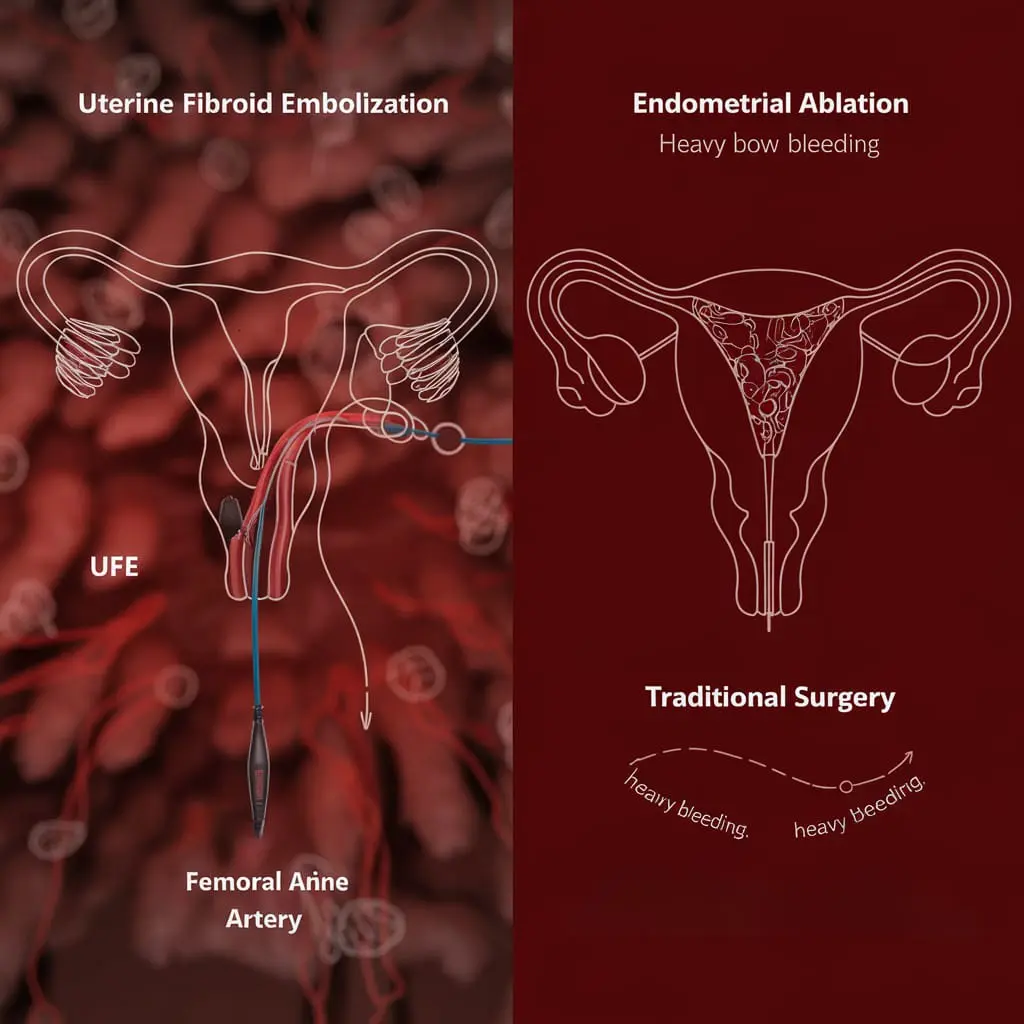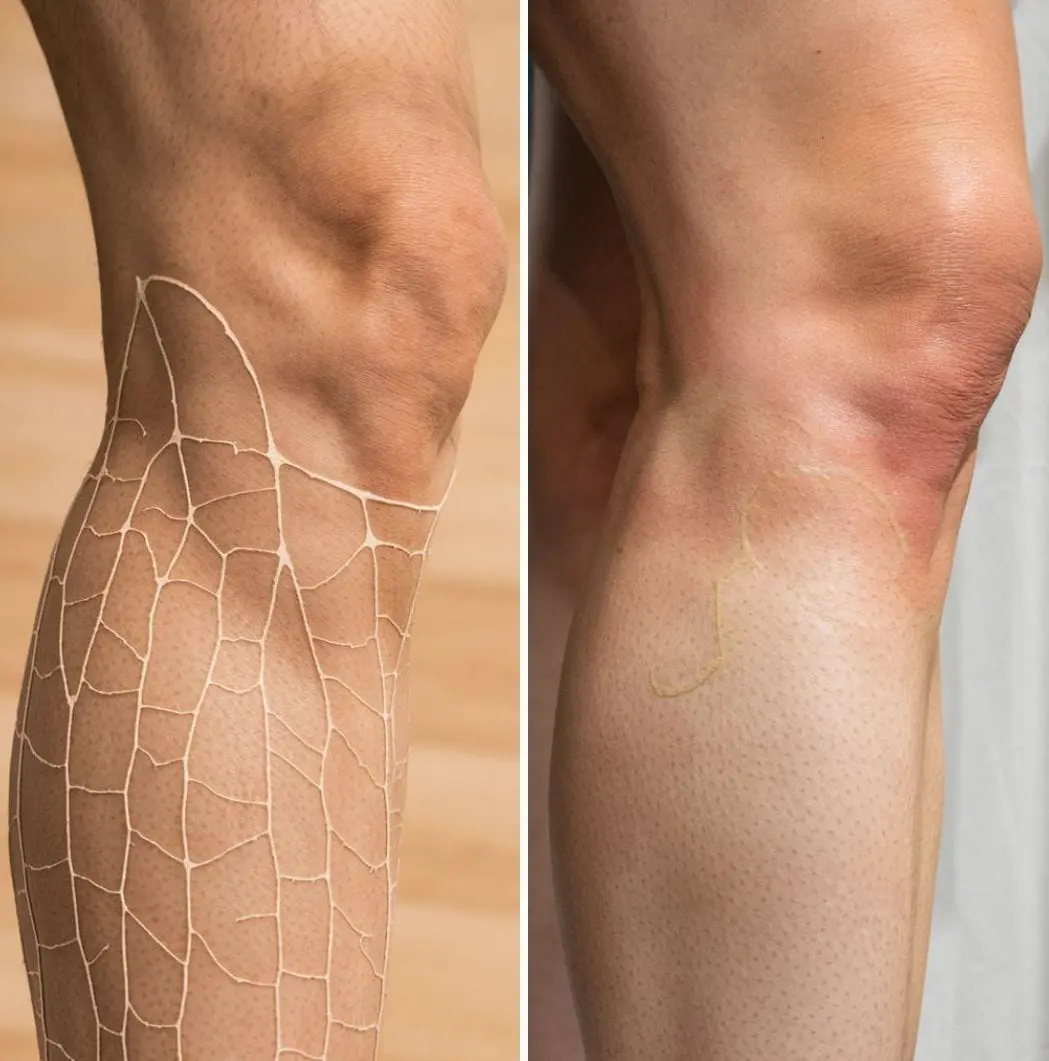Women's Interventional Procedures
Women’s interventional procedures offer minimally invasive treatments for conditions like uterine fibroids, endometriosis, varicose veins, and pelvic pain. These treatments help reduce recovery times, minimize complications, and improve the overall quality of life for women facing health issues.
This article explores the causes, symptoms, benefits, and latest treatment techniques for these procedures, focusing on how they can provide lasting relief.
Causes of Conditions Requiring Women’s Interventional Procedures
Several conditions specific to women require interventional procedures, including:
- Uterine Fibroids: Non-cancerous tumors causing pain, heavy bleeding, and infertility.
- Endometriosis: Tissue growth outside the uterus, leading to pain and potential fertility issues.
- Varicose Veins: Enlarged veins, often in the legs, causing pain, swelling, and heaviness.
- Pelvic Congestion Syndrome: Varicose veins in the pelvic area causing chronic pelvic pain.
- Cervical Issues: Abnormalities that may require intervention to prevent cancer or further complications.
These conditions significantly impact daily life and require timely, effective treatment.

Symptoms of Conditions Requiring Treatment
Conditions needing interventional procedures often present with:
- Heavy Menstrual Bleeding: Often caused by fibroids or endometrial issues.
- Pelvic Pain: Common with endometriosis or pelvic congestion syndrome.
- Swelling in Legs: Typically due to varicose veins.
- Frequent Urination or Painful Intercourse: Caused by fibroids or endometriosis.
- Abnormal Pap Smear Results: Indicating possible cervical issues.
Identifying these symptoms early can significantly improve treatment outcomes.
Benefits of Early Treatment for Women’s Health Conditions
Early treatment of women’s health issues offers numerous advantages:
- Minimally Invasive: Most procedures are less invasive than traditional surgery, reducing recovery time and risk of complications.
- Faster Recovery: Patients experience quicker recovery and can return to normal activities sooner.
- Prevention of Complications: Early intervention can prevent the progression of conditions, avoiding more invasive treatments later.
- Improved Quality of Life: Treatment can relieve symptoms like pain and heavy bleeding, allowing women to lead healthier, more comfortable lives.
Latest Treatment Techniques for Women’s Interventional Procedures
Advancements in medical technology have led to several effective, minimally invasive treatment options:
1. Uterine Fibroid Embolization (UFE)
UFE involves blocking the blood supply to fibroids, causing them to shrink and die. This procedure is a good alternative to surgery, particularly for women who want to preserve their uterus.
Example: A woman with fibroids underwent UFE and saw significant improvement in symptoms without needing surgery.
Pros:
- No need for general anesthesia
- Preserves the uterus
- Short recovery time

2. Endometrial Ablation
This procedure removes or destroys the uterine lining to treat heavy bleeding. It’s often recommended for women who do not wish to have children.
Example: Sarah, struggling with heavy bleeding, had endometrial ablation. The procedure provided relief and avoided the need for a hysterectomy.
Pros:
- Effective for abnormal bleeding
- Quick recovery
- No major surgery
3. Varicose Vein Treatment (Endovenous Laser Therapy or Sclerotherapy)
Endovenous laser therapy (EVLT) and sclerotherapy treat varicose veins. EVLT uses laser energy to close problematic veins, while sclerotherapy injects a solution to collapse veins.
Example: A woman with varicose veins underwent EVLT, reducing discomfort and improving leg appearance.
Pros:
- Minimally invasive
- Effective for visible veins
- Fast recovery
4. Pelvic Congestion Syndrome Treatment (Uterine Artery Embolization)
Pelvic congestion syndrome causes chronic pelvic pain due to varicose veins in the pelvic area. Uterine artery embolization blocks these veins to alleviate pain.
Example: Helen, suffering from pelvic pain, had uterine artery embolization. The procedure provided significant relief and restored her quality of life.
Pros:
- Non-surgical
- Quick recovery
- Effective for pelvic pain

Conclusion
Women’s interventional procedures offer minimally invasive treatments for conditions like uterine fibroids, varicose veins, and pelvic pain. Advances in techniques such as UFE, endometrial ablation, and varicose vein treatments ensure quick recovery, minimal complications, and long-lasting relief. Early intervention is key to better outcomes and improved quality of life.
If you’re experiencing symptoms of any of these conditions, consult a healthcare provider to explore the best treatment options.
Frequently Asked Questions (FAQs)
UFE is a procedure that blocks blood flow to fibroids, causing them to shrink without surgery.
Yes, it provides permanent relief for abnormal bleeding, but it's not reversible.
Recovery is quick, with most patients resuming normal activities in a few days.
Risks are minimal but can include infection or minor complications at the access site.
Would you like to request an appointment?
You can call on +91-98200 86520 for Appointments or fill the form below
If you’re experiencing symptoms related to any of these conditions, contact us today for a consultation. Our specialists will help you find the best treatment options for your health and well-being.
